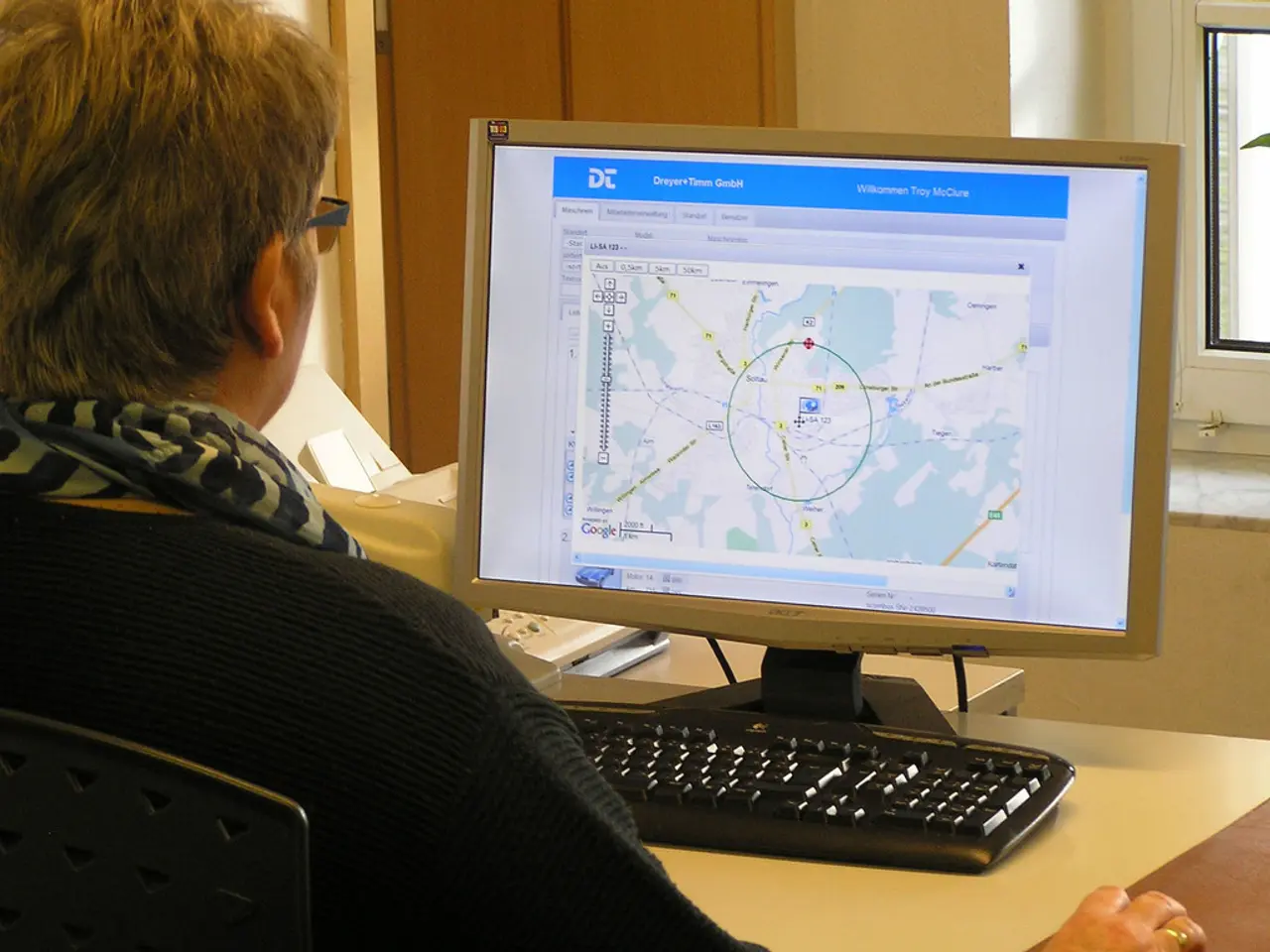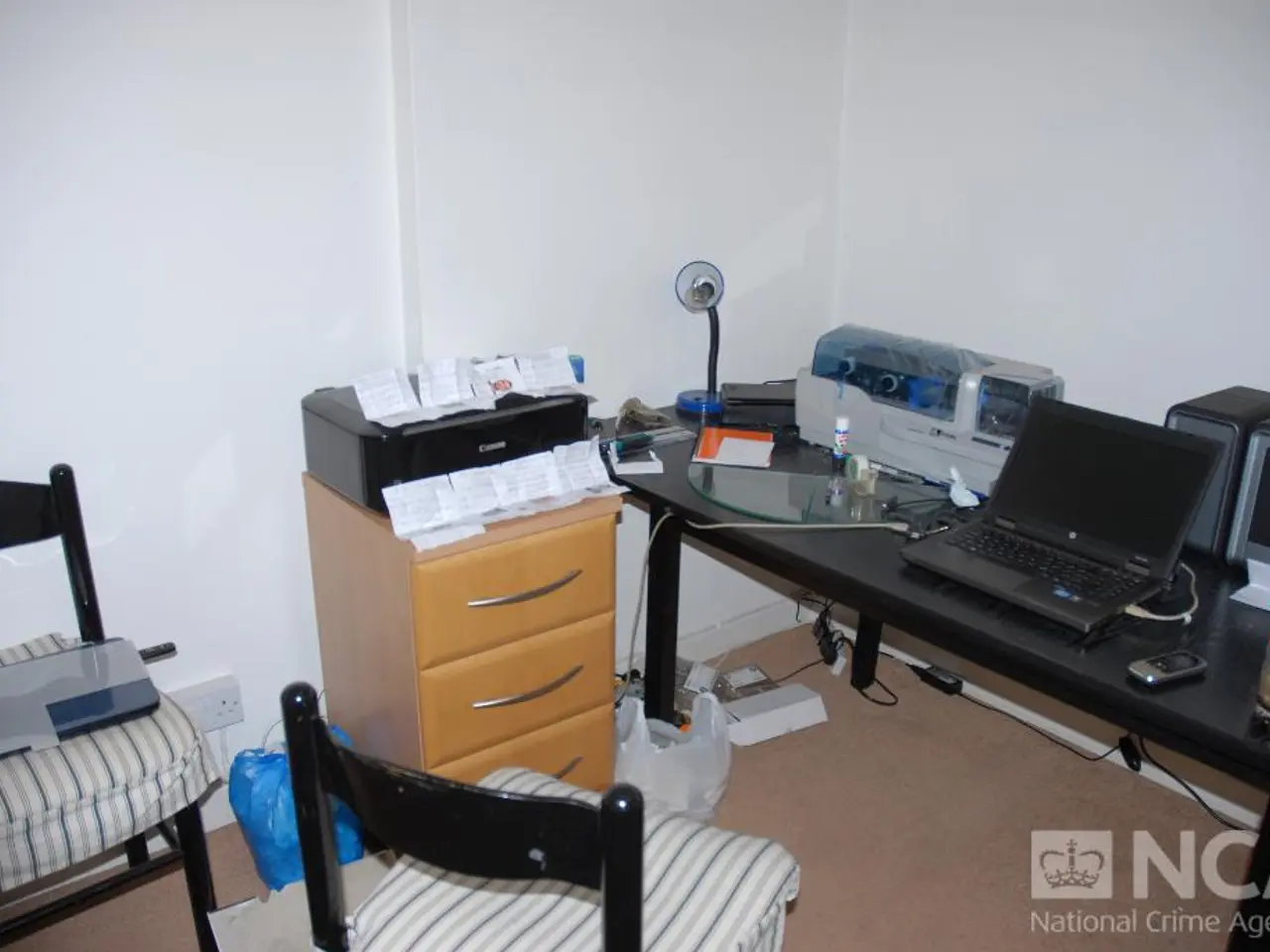Unraveling Spatial and Temporal Dynamics: Innovative Technology Reveals Intricate Tumor Development Chronology
In a groundbreaking study published in the journal Science on July 24, researchers have developed a powerful new tool called PEtracer. This innovative gene-editing based technology allows for the tracking of the lineage and spatial history of tumor cells, providing a detailed view of how elements intrinsic to the cancer cells and from their environments influence tumor growth [1][2].
PEtracer employs prime editing to directly rewrite stretches of DNA in living cells with minimal side effects. It adds "lineage tracing marks" made of five DNA bases to cells as they divide, enabling researchers to reconstruct each cell’s family tree and observe how tumor cells grow and move within tissue in high resolution [1][2][3].
The researchers used PEtracer to analyze four distinct modules, or neighborhoods, within the metastatic tumors in mice. Their findings suggest that the cancer cells' differing traits were heavily influenced by their environments, or the conditions in their local neighborhoods, rather than their family history [1][2].
For instance, the cells closest to the lung, the most nutrient-dense region, were the most fit, indicating the highest rate of cell division over time. Conversely, the cells below the leading edge were found in a low-oxygen neighborhood, potentially indicating former leading edge cells now trapped in a less-desirable spot [1].
Interestingly, the expression of certain fitness-related genes, such as Fgf1/Fgfbp1, correlated to a cell’s location, rather than its ancestry. Meanwhile, lung-adjacent cells also had inherited traits that gave them an edge, including expression of the fitness-related gene Cldn4 [1].
The development of PEtracer required interdisciplinary collaboration, with expertise in genetic engineering, imaging, cancer biology, and computation. Luke Koblan, a postdoc in Weissman’s lab, emphasizes that understanding how cells move in time and space is an important way to look at biology [1].
The researchers aim to apply the PEtracer tool to look at various questions in health and disease, embryonic development, and across other model species. The collected data will also be useful for training AI models of cellular behavior [1]. This advancement in understanding cellular behavior could pave the way for more effective treatments and a deeper understanding of biological processes.
References: [1] Koblan, L. et al. (2021). PEtracer allows for high-resolution lineage and spatial mapping of tumor cells. Science. [Link to the article] [2] University of California – San Francisco. (2021, July 24). New gene-editing tool reveals how cancer cells evolve and migrate. ScienceDaily. [Link to the press release] [3] Cong, L. et al. (2018). High-efficiency genome engineering using base editing in human cells. Science. [Link to the article]
- The breakthrough study in the journal Science on July 24 introduces a technology called PEtracer, a powerful gene-editing tool used for tracking the lineage and spatial history of cancer cells.
- PEtracer uses prime editing to rewrite DNA in living cells, adding "lineage tracing marks" as cells divide, enabling researchers to construct cellular family trees.
- The researchers analyzed four modules within metastatic tumors in mice using PEtracer, revealing that cancer cells' traits were more influenced by their environments than their family history.
- The findings suggest that cells closest to the lung, the most nutrient-dense region, were the most fit, while cells below the leading edge were in low-oxygen neighborhoods.
- Expression of certain fitness-related genes, like Fgf1/Fgfbp1, correlated to a cell’s location, rather than its ancestry, while lung-adjacent cells expressed genes that gave them an advantage.
- The development of PEtracer required collaboration from various fields, including genetic engineering, imaging, cancer biology, and computation.
- The researchers aim to apply PEtracer to various questions in health and disease, embryonic development, and across other model species, and believe the collected data will be beneficial for training AI models of cellular behavior.
- This advancement in understanding cellular behavior could lead to more effective treatments and a deeper understanding of biological processes.
- The development of PEtracer builds upon past research in genome engineering, as seen in the work of Li-Qiong Cong and his team, who introduced base editing in human cells in a 2018 Science article.




